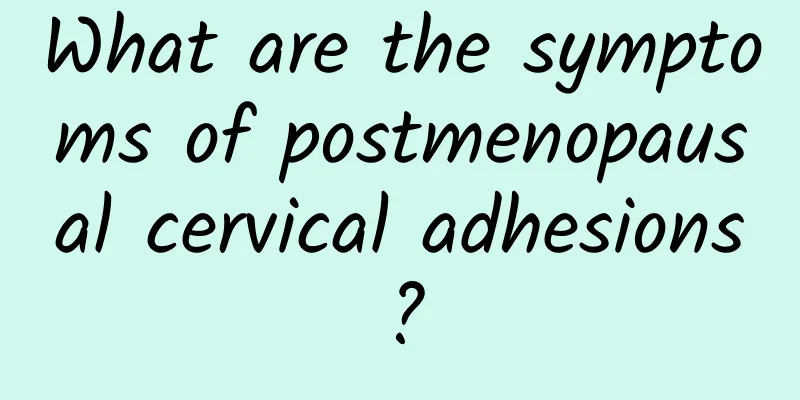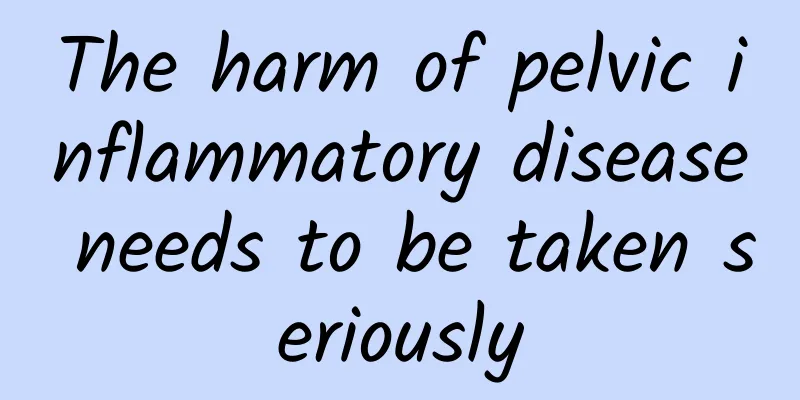What are the symptoms of postmenopausal cervical adhesions?

|
Symptoms of postmenopausal cervical adhesions include abnormal vaginal discharge, abnormal menstruation, and pain during sexual intercourse, which may be related to decreased hormone levels, inflammation, or a history of surgery. Treatments include medication, physical therapy, and surgery. 1. Abnormal vaginal discharge After menopause, female hormone levels drop and cervical mucus secretion decreases, which may cause vaginal dryness or abnormal discharge. If the discharge is yellow, has a strange smell, or is accompanied by itching, it may be a manifestation of cervical adhesions. It is recommended to use local estrogen ointment or vaginal moisturizer to help relieve symptoms. 2. Abnormal menstruation Postmenopausal cervical adhesions may lead to uterine fluid accumulation or poor menstrual discharge, which may manifest as abnormal bleeding or menstrual-like discharge. This condition may be related to cervical stenosis or adhesions. Ultrasound examination can be used to confirm the diagnosis, and cervical dilation or hysteroscopy can be performed if necessary. 3. Pain during sexual intercourse Cervical adhesions may cause cervical stiffness or abnormal position, causing pain or discomfort during sexual intercourse. It is recommended to use lubricants to improve the sexual experience, and physical therapy such as heat or pelvic floor muscle training can be considered to help relieve pain. 4. Other symptoms Some patients may experience symptoms such as lower abdominal distension, frequent urination, or discomfort during defecation. These symptoms may be related to changes in the position of pelvic organs caused by cervical adhesions. It is recommended to have regular gynecological examinations and, if necessary, imaging examinations to evaluate the condition. Treatments include medication, physical therapy, and surgery. Medication can use local estrogen preparations or anti-inflammatory drugs; physical therapy includes hot compresses, pelvic floor muscle training, etc.; surgical treatments such as cervical dilation or hysteroscopy are suitable for patients with severe symptoms or those who are ineffective with medication. Symptoms of postmenopausal cervical adhesions vary and may be related to decreased hormone levels, inflammation, or a history of surgery. Timely medical attention and targeted treatment are key. It is recommended that postmenopausal women undergo regular gynecological examinations, pay attention to physical changes, and consult professionals to take appropriate treatment measures when necessary to improve their quality of life. |
<<: How long does it take for bleeding symptoms to appear in ectopic pregnancy?
>>: Beware of abnormal vaginal discharge in early pregnancy
Recommend
What are the specific precautions after abortion?
Abortion is suitable for most people in life. Man...
What are the symptoms of uterine adnexitis?
What are the symptoms of adnexitis? Adnexitis is ...
It is also very important to prevent the recurrence of cervicitis
Most women have a history of cervicitis, but many...
How to treat moderate cervical erosion? Several effective treatments for moderate cervical erosion
Cervical erosion is a common disease among women,...
Why can't congenital absence of vagina be cured?
Why can't congenital absence of vagina be cur...
What is pelvic endometriosis and what are its main symptoms?
What is pelvic endometriosis? What are the main s...
Can I still get pregnant if I have cervical erosion?
Cervical erosion is a very common gynecological d...
Is cervical erosion contagious?
Is cervical erosion contagious? The occurrence of...
Doctors suggest: Girls should also undergo gynecological examinations
Generally speaking, women who have sex should hav...
Chinese medicine prescription for pelvic inflammatory disease classification
Chinese medicine prescription for pelvic inflamma...
Treatment of vulvar leukoplakia should be started sooner rather than later
Vulvar leukoplakia is very harmful to patients, e...
What medicine should I take for a 2-centimeter uterine fibroid? Can a 2-centimeter uterine fibroid be eliminated by taking medicine?
What medicine should I take for a 2 cm uterine fi...
A sweet burden? Study: Fructose harms livers in young people
The "sweetness" of processed foods avai...
This is great for gaining muscle and losing fat! What is Turkish Yogurt Egg Salad? Nutritionist teaches you DIY
What should you do if you want to successfully lo...
Middle-aged women should actively prevent vulvar leukoplakia
Vulvar leukoplakia is a common disease among wome...









